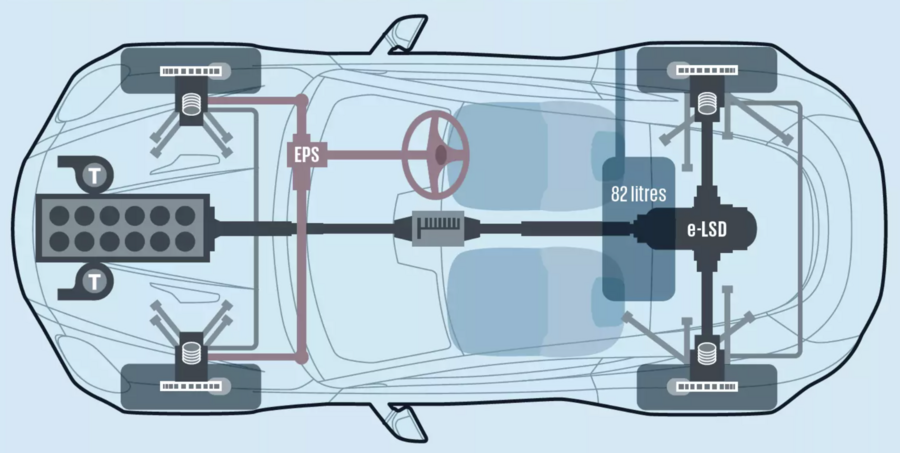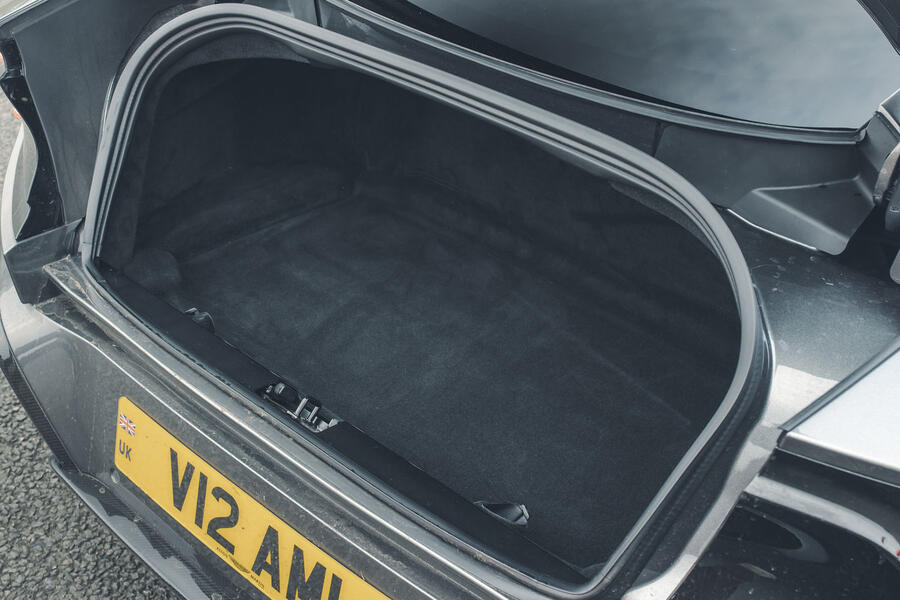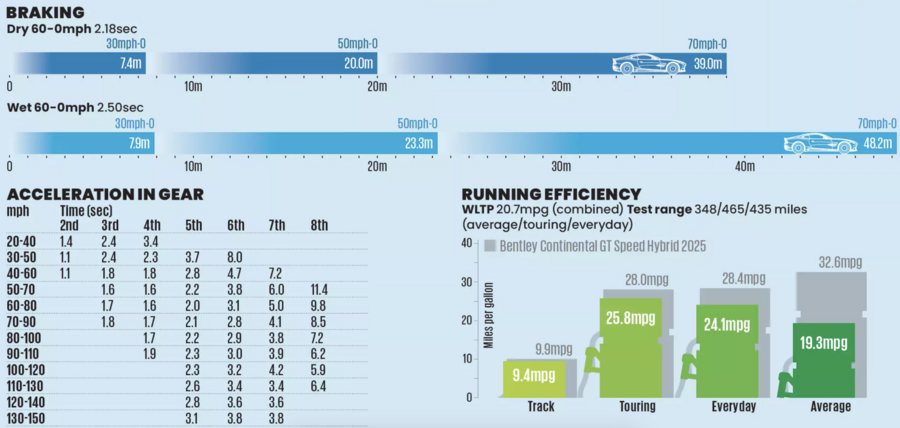Prod the hefty ‘engine on’ button and a starter motor whirrs away somewhere in the distance, in characteristically extended Aston Martin fashion, before the V12 fires cleanly with a primal gargle. It is quite the curtain-raiser, and this is still with the Vanquish in its buttoned-down GT running mode.
For performance testing, Sport+ is required and it is just as well that we have MIRA at hand, because to experience the Vanquish at its full, wonderfully effusive, monstrously quick potential, you really do need the expanses of an empty industry proving ground at your disposal.
Aston doesn’t prioritise standing starts when it comes to gearbox calibration but 3.1sec to 60mph is nevertheless world-class for this type of car and is more than half a second quicker than our time for the DBS Superleggera. The Vanquish’s new, 20mm-wider rear Pirellis help make use of its additional 109bhp, and while step-off itself is steady, almost immediately thereafter the chassis electronics do a deft job of limiting slip while allowing maximum forward motion. Triple figures come up after just 6.2sec, which matches to the very tenth the lighter Ferrari 812 Superfast – a car only marginally less powerful than the Vanquish and from a philosophical standpoint very much a snarling supercar in GT drag.
Fact is, launching a Vanquish is initially a bit undramatic. It’s only when the tyres are fully hooked up from the top of second gear onward, and the ESP can lower its guard – allowing 738lb ft to flow unfettered to the back axle as each new gear engages and the crank is returned into the furnace of the V12’s broad torque band – that you start to feel the car in full flight. And it is then breathtaking. Figuratively and literally.

There’s also immense satisfaction in wringing this V12 to its 7000rpm limit. Its ferocity doesn’t noticeably taper under the strain of increasing rotational inertia. Instead, it spins freely and sounds superbly tuneful, just when an engine of a blown nature and vast scale might begin to wilt. There is, admits Aston, a synthesised element to the intake and exhaust note, but it’s subtle and realistic and we didn’t mind it. Hold onto a big gear and the way the V12 changes in sonic character is always entertaining.
You won’t be surprised to learn that there is also satisfaction to be had at the foot of the rev range, where downshifts are also optional. Peak torque develops at 2500rpm and the car’s 3.9sec 30-70mph time in fourth gear highlights the scope of its immense tractability. Even the electric-assisted Revuelto could hardly go quicker in this metric. The uptake of boost is brutish from 2000rpm, but once you’re beyond that point, tip-in response is fairly neat and manageable and the delivery linear, if not anything like as precise as it is in the 12Cilindri.
It all makes the V12 enjoyable company on the open road, where it defines the word ‘effortless’ in its ability to work the chassis at any moment, but will, if you fancy it, always reward a foray to the redline. As for the gearbox, it is effective enough but no joy, sometimes seeming reluctant to downshift in its automatic setting and not offering much tactility if you take manual control (which, usefully, can be locked in with a dedicated button on the transmission tunnel). That said, it rarely inhibits your fun.
Another surprising strength of the Vanquish is its ability to shed speed (useful, that). In fact, the 38.0m required to haul up from 70mph in our final brake fade test elicited a double-take at the datalog. That is 30cm less than the current Porsche 911 Turbo S needed. To our knowledge, the 410mm carbon-ceramic front discs are among the largest ever fitted to a traditional performance car (ie not an SUV).






































































